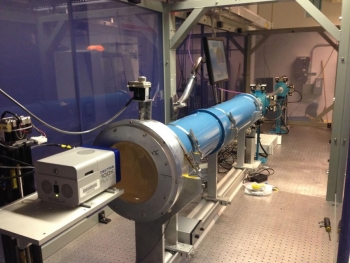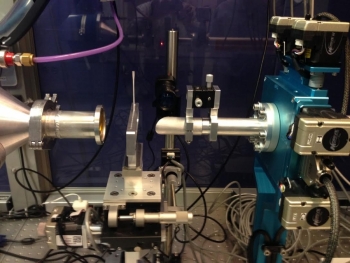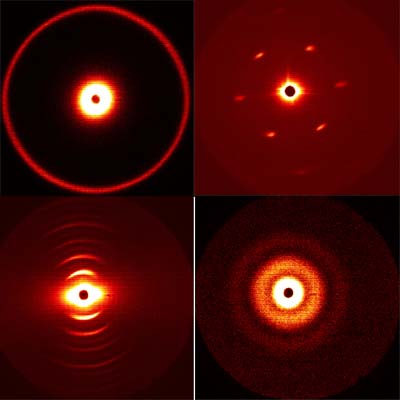

The SAXS instrument provides cutting edge capabilities for probing large length-scale structures such as polymers, biological macromolecules, meso- and nano-porous materials, and molecular self-assemblies. Background scattering is minimized through the use of an evacuated flight path and vacuum compatible motorized slits.
Designed and constructed by researchers in the MRL X-ray Facility, the SAXS diffractometer first became available to users in fall of 2000. In 2008, the system was upgraded with a high brilliance x-ray micro-source and new optics from XENOCS which resulted in substantial performance enhancement. The system was again upgraded in 2015 with the addition of a new EIGER R 1M detector resulting in a setup that produces exposures of unrivaled data quality and spatial resolution.
As a result of a recent in house development, the SAXS instrument was upgraded with the single crystal/metal hybrid scatterless slits that are practically free of parasitic slit scattering. The total number of apertures in the collimation system is reduced to two. For most applications, only one set of slits is used, effectively making the instrument a Single Aperture SAXS camera, with a 300% boost in flux at sample position without compromising resolution.

2D SAXS data collected in house. Clockwise from top left:
(1) Silver behenate (3 min exposure)
(2) Ordered mesoporous silica film (60 min exposure)
(3) Microtubule in solution (20 min exposure)
(4) Hydrated chicken leg tendon (60 min exposure)
Features
|
X-ray Source |
|
|
Wavelength |
1.54 Å |
|
Monochromator |
|
|
Detector |
Dectris EIGER R 1M detector, 77.2 mm x 79.9 mm sensitive area 1030 x 1065 32 bit image. |
|
Beam Size at Sample |
~ 0.8 mm x 0.8 mm |
|
Flux at Sample position (x-ray power: 50kV x 1mA) |
1.6x107 photons/sec |
|
Source to Sample Distance |
1.7 meter, variable by changing flight tubes |
|
Sample to Detector Distance |
1.7 meter, variable by changing flight tubes |
|
Q range (typical) |
0.007 – 0.32 (Å-1) |
|
Total instrument length |
3.4 meter |
|
X-ray Optics |
2 sets of motorized vaccuum slits with newly developed scatterless blades |
|
Flight Paths |
Evacuated aluminum pipes |
|
Sample Chamber |
In air with motorized x-y-z translations and rotation |
|
User Interface |
SPEC |
Lab:
Location:
1409 CNSI
Instrument Information and/or Manual:
| Attachment | Size |
|---|---|
| 325.42 KB |
